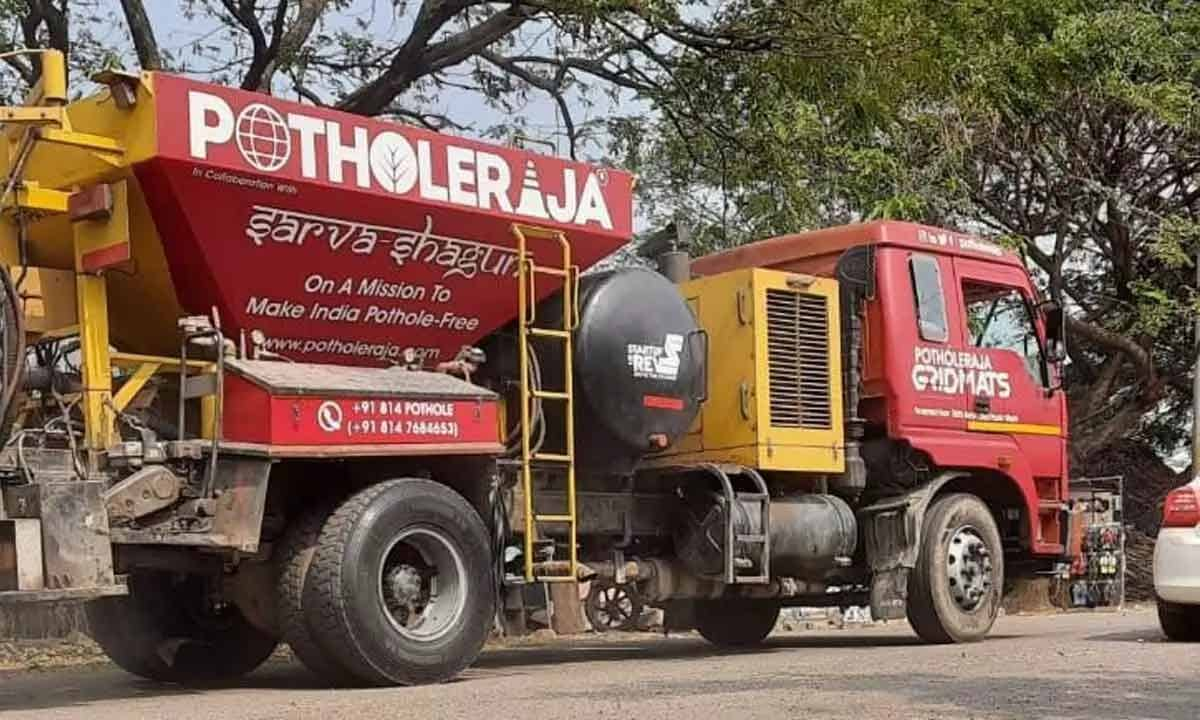
An ex-Indian Air Force pilot Dr Prathap B Rao and former software developer Sourabh Kumar have collaborated to fix the roads in India through their eco-friendly and durable technology called GridMats. Their social enterprise, PotHoleRaja constructs roads using its patented technique of using recycled polypropylene. Here is a detailed report on SURFACES REPORTER (SR).

What is GridMats?
Made entirely from recycled plastic waste, GridMats are placed above the bedding layer. They are further packed with different filling options to create a permanent flat, high-quality surface in about less than half the time and 20-25 per cent cheaper cost.
Recyclers collect a significant amount of plastic waste that is generated by industries. The waste is then segregated, washed and cleaned before it arrives at PotHoleRaja’s factory in Hosur. The recycled plastic waste comes in the form of pellets. The factory uses these pellets to make GridMats, which is a honeycomb-like structure. GridMats are made from recycled polypropylene waste such as plastic chairs, buckets and any hard plastics that are used in automobiles, and can be used in the construction of roads.

The process
So far, the enterprise has worked on multiple road projects across India. Reportedly, GridMats have been installed in Bengaluru’s various residential and commercial properties such as in the Peenya industrial area right outside the ABB India Limited factory, PotHoleRaja’s pavement, Maruti Suzuki factory in Gurugram, a heavy-duty factory in Jammu, to name a few. Recently, the team bagged the contract to construct a 200m stretch road in the Ulhasnagar Municipal Corporation area, after winning a startup competition held by the Maharashtra Government.
GridMats are reportedly constructed where heavy-duty vehicles are present such as inside factory premises. Roads constructed with GridMats come with a five years warranty. Before GridMats are laid on the road, the team begins with compacting the soil to form a base, a process that traditional road makers use. A minimum 300mm layer of soil layer is created as compared to the traditional 500mm-600mm layer. This step is then followed by the process of laying down bigger-size aggregates such as WMM (wet mix macadam) or WBM (water-bound macadam). WMM uses stone aggregates and binders, while WBM uses stone aggregates, screenings and binder materials such as stone dust with water. A combination of these materials adds to the strength of the pavement. In contrast to the overlaying of 250mm to 300mm thick layer of these materials, PotHoleRaja goes up to 100mm to 150mm on top of the Geofabric sheet.
Generally, conventional roads lay 150mm to 20mm thick layer of concrete on top of stone and dust to set up a base for the next layer of concrete. Thus, the final layer of concrete laid on the road is about 250mm to 300mm thick. For roads constructed with GridMats technology, a rolled-up, thin layer of m-sand, which is an eco-friendly building material, is laid down. GridMats is 40mm thick where concrete is filled in the pockets of its honeycomb structure. The final product is only the grid with a thickness of 40mm, thereby saving a lot of concrete usage. This technology does not use steel reinforcements and leaves no room for expansion and contraction of concrete roads, thereby avoiding future cracks. Unlike conventional roads that have four to five layers, GridMats allows only two or three layers.
Reportedly, there is little scope for re-laying roads built using GridMats. And in case to fix a massive one, the damaged part will be cut open and re-laid. Since the technology uses fewer materials, the maintenance is also less.